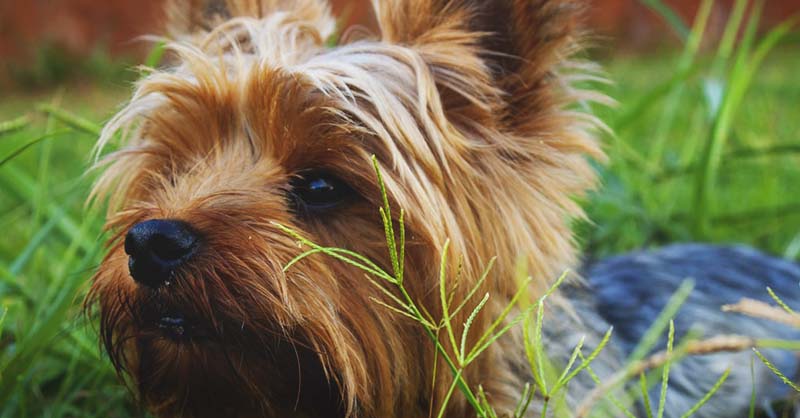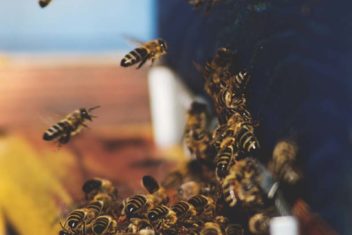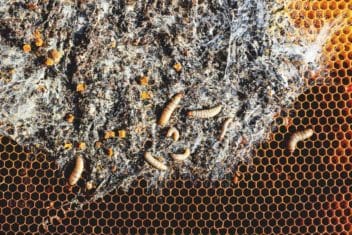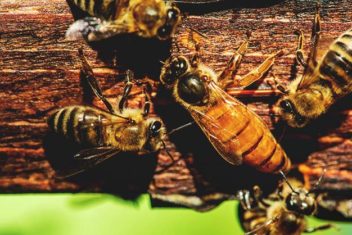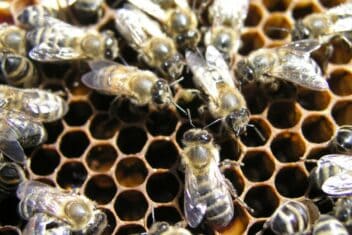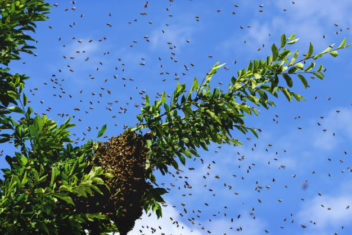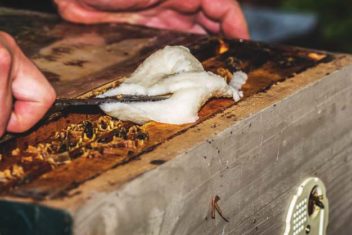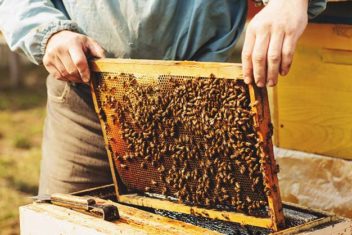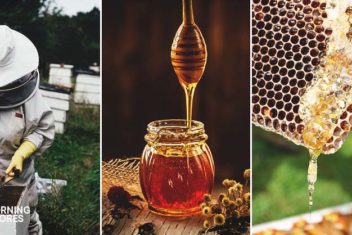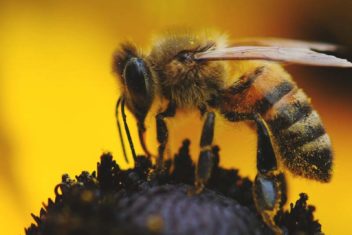When you add bees to your home, you will wonder how their presence will affect the rest of your animals. Maybe, you are even a little concerned about how your bees will react to a new puppy on the farm.
The truth is, it’s important to consider the safety of both your bees and pets. Luckily, everyone can live in harmony if you have created a safe space with each animal in mind.
Before getting into details on how to maintain a safe homestead, it is crucial to understand that any animal can be allergic to bee stings. Moreover, multiple bee stings can potentially kill anything.
Luckily, protecting your pets is a lot easier than you may think. Read on to learn how to maintain harmony amongst your hive and your critters.
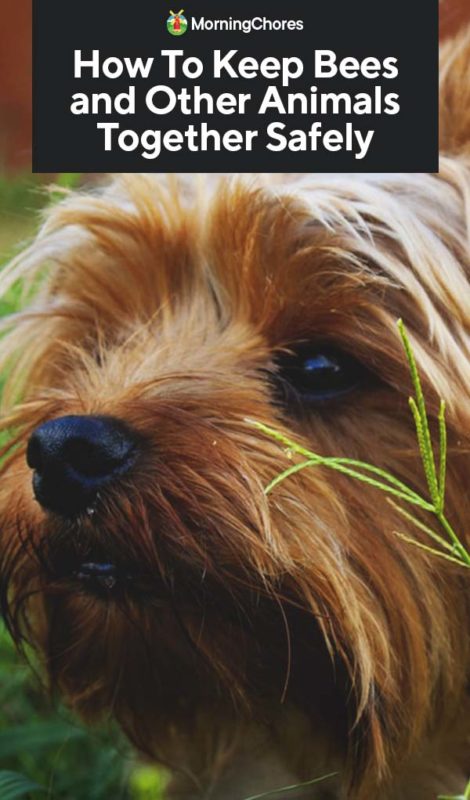
Keeping Bees With Dogs
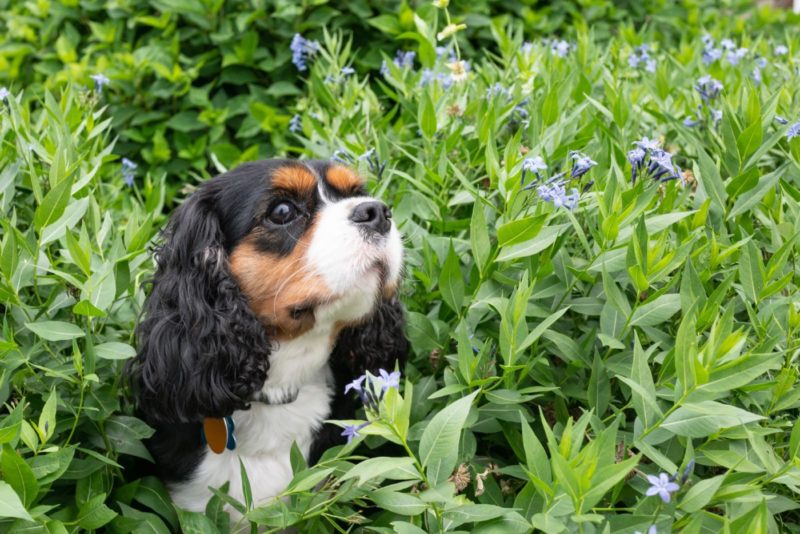
If you have dogs, at some point there will probably be an interaction between your bees and pets.
You’ve probably seen dogs snapping at insects from time-to-time. In fact, it’s made you cringe to watch your pup lunge at bees.
Here’s the good news though; when a dog is stung for the first time, it wants nothing more than to ensure that it’s also the last.
So, when your new puppy does catch his first bee, fido will learn his lesson pretty quickly.
With that being said, here are two occasions your dog may be in danger of more than just a one-and-done sting:
1. Tethered Dogs
If you tend to keep your dog outdoors in a confined area, ensure your dog is kept far away from your apiary. Keeping your dog at a distance ensures that an aggressive bee attack does not leave your dog trapped. Your dog needs to be able to escape from aggressive attacks at a moments notice.
2. Dogs With Bee Allergies
If your dog is allergic to bees, which is possible, take extreme caution to ensure an accidental sting does not occur.
You can use repellents or essential oils on your dog to keep insects from stinging your pup.
While it isn’t common for dogs to be allergic to bees, it never hurts to ask your veterinarian to do a test. It’s much better to know before a sting occurs so you can treat your dog accordingly.
If your dog is stung by a bee, apply a cold compress to reduce pain and swelling.
However, if you suspect your dog has an allergic reaction, take it to the vet without hesitation.
3. Signs Your Dog Has a Severe Bee Allergy
- Swelling of the face, tongue, or neck
- Difficulty breathing
- Anaphylactic shock, passing out, collapsing
These symptoms are common for most animals with bee allergies. So, always be on the lookout for anyone or anything that has been stung with these reactions, and act fast.
Keeping Horses and Cattle Near Bees
Horses and cattle deal with a lot of annoying bugs: horseflies, gnats, mites, mosquitos, and on and on. Luckily, bees have very little interest in livestock, mostly because livestock eat all the good stuff anyway.
The only time to be concerned about your hive harming your cattle is if they become the misdirected target of your bees’ aggression.
For example, if a bear visits and destroys your hive, your bees may not realize who the real culprit is. If you have livestock nearby, they may take their anger out on your horse.
Even in this scenario, with room to run, your horse can escape an attack. Aside from fleeing, horses have their own defense mechanisms in place – their tails.
Livestock tails act as fly swatters, which can deter a small number of pests at a time.
Speaking of tails, keeping your livestock’s tails in their natural state, and not docked, will help them keep pests at bay.
You can also preemptively ward off stinging insects with repellents found at stores or co-ops. If chemicals aren’t your thing, try using essential oils to protect both your livestock and your bees.
Raising Chickens With Bees
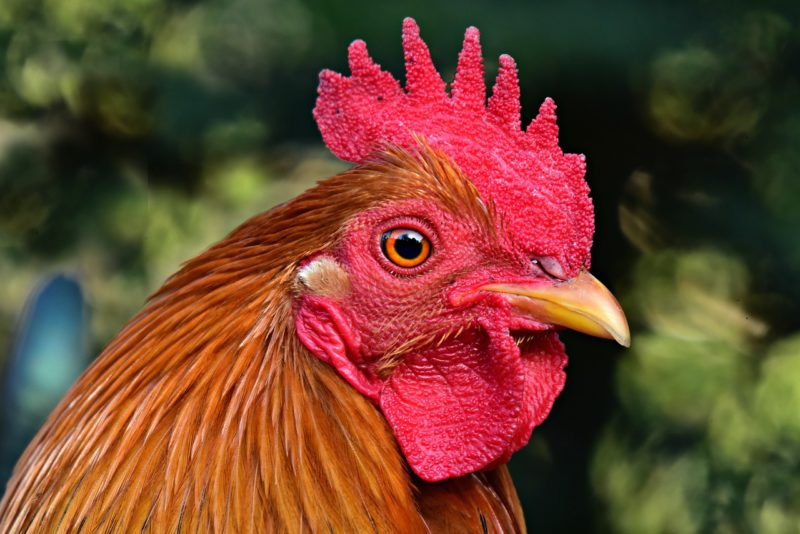
Your gut reaction may lead you to think that chickens will eat bees, and might actually enjoy them. The truth is, chickens have very little interest in your apiary. Chickens have much bigger and better fish to fry, like mosquito eggs and grubs.
Bees and chickens coexist surprisingly well, as long as chickens do not pursue the liquid gold and honeycomb inside the hive. If your chickens do get a little gutsy and overstep their boundaries, they can be stung on the featherless parts of their bodies.
Other than that, your chickens don’t pay much attention to your bees, and vice versa.
How to Keep Your Bees Safe
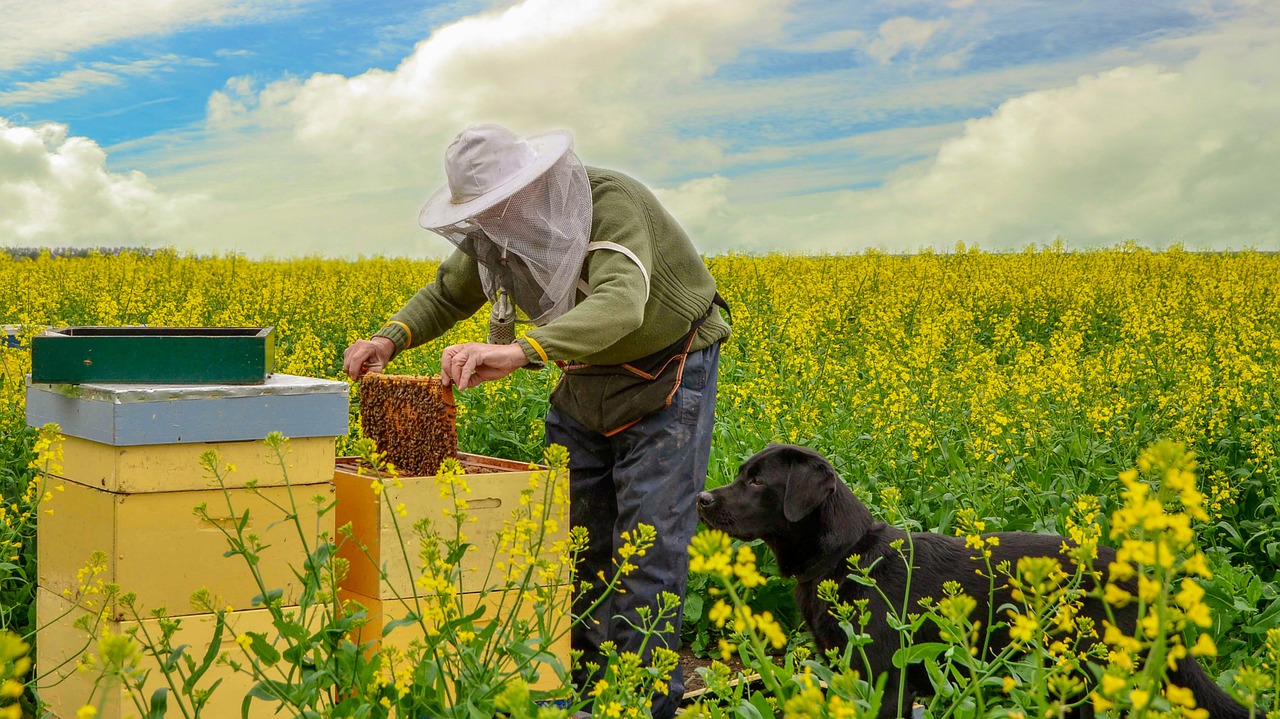
It’s lovely to think it’s easy for your pets, and livestock, to learn to coexist with your bees. And, it’s true, nature usually has a way of sorting out the impending drama between species. But, the most significant problems arise when pets cannot escape a bee attack.
So, keep the following tips in mind when assimilating your hive to your bustling barnyard:
1. Give Your Bees and Pets Plenty of Space
Not only is it wise to keep your bees far from your home to protect your family, but it also cuts back on the interaction between pets and bees.
Keeping ample space between the areas of your property where your furbabies romp and your bees reside, makes it easier for dogs to avoid the hive. You can easily train your dog to stay away from buzzing beehives if you are able to set boundaries.
2. Don’t Confine Pets Near Bees
The worst thing you can do is leave confined animals exposed to the possibility of an aggressive bee attack. Remember, bees may not know who disturbed them, and a dog stuck on a lead is a sitting duck.
The same goes for cattle and chickens. If you have limited space, try your best to keep bees in an area that has low traffic and is far from your fenced animals.
If your pets cannot escape an aggressive attack, they may end up trapped in a painful situation.
3. Fence Your Beehive In
If you have curious dogs, poultry or goats, fencing in your hive may be a suitable option. It doesn’t hurt to employ fencing to keep your bees and pets safe, to begin with. A barrier to prevent curious critters from entering the “danger zone” will go a long way to keep your pets safe.
Bees don’t usually become aggressive unless they feel their hive is being threatened, this goes for Africanized bees as well. So if you’re goat is feeling playful and bounces off your hives, your little kid could become freckled with stings. An honest mistake, but it could turn out to be deadly for the goat, or other innocent bystanders.
Your best bet to keep any misunderstandings from occurring is to give your bees some space. Once your bees are away from the hive, foraging, they rarely become aggressive. So, put up some sturdy fencing to keep curious pets from wandering onto the bees’ property—bees hate trespassers.

